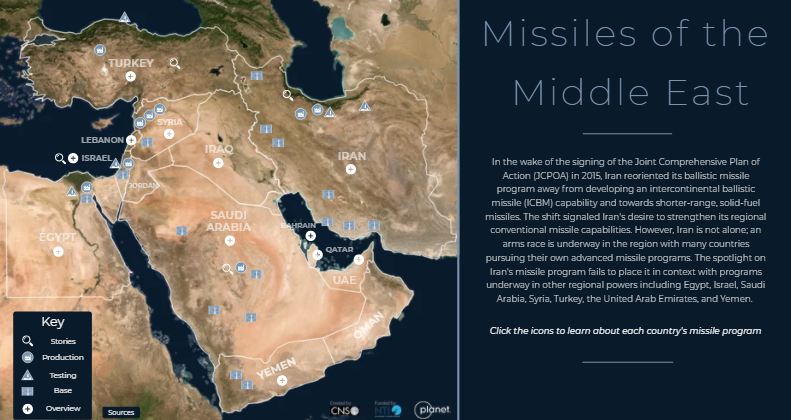Syria

Country Spotlight
Large-scale chemical weapons use has exacerbated the brutal Syrian Civil War (2011-present). Although Syria signed the Chemical Weapons Convention in 2013 and cooperated in the destruction of its CW, the Syrian regime has continued to use chemical weapons, including in attacks against civilians.
See Syria's performance in
Region Middle East and North Africa
336 Estimated chemical weapon attacks since 2012
80 Alleged chemical weapons attacks investigated by the OPCW’s Fact Finding Mission
96% Of chemical weapons stockpile destroyed
2007 Israeli raid destroyed undeclared nuclear reactor
Nuclear
- Sought nuclear technical assistance from countries including China, Russia, Iran, and North Korea
- Al-Kibar facility, destroyed by Israel in 2007, likely an undeclared nuclear reactor according to IAEA
- Civil war has suspended IAEA verification activities since 2013
Is Syria a Candidate for Nuclear Proliferation?
Biological
- Declared ricin production facility and stockpiles of purified ricin to OPCW in 2014
- Very limited open source information regarding current biological warfare capabilities
- Pharmaceutical and biotechnology sectors industries debilitated by ongoing civil war
Syria Biological Overview
Syria Biological Facilities
Missile
- One of the largest arsenals of SRBMs (short range ballistic missiles) in the region before the civil war
- Over 90% of the regime’s missile stockpile has been used since 2012
- Possesses Russian-made advanced air defense missile systems, including the S-300 and S-400
Syria Missile Overview
Syria Missile Facilities
Chemical
- Developed the capacity to produce chemical weapons indigenously in the 1980s, after receiving initial assistance from Egypt
- Committed to “total and verified" destruction of chemical weapons stockpiles in 2013
- Conducted major chemical weapon attacks after 2013 declaration, including Khan Sheikhoun (2017) and Douma (2018)

Tutorial on Chemical Weapons Nonproliferation
Disarming Syria of Its Chemical Weapons: Lessons Learned from Iraq and Libya
Treaties and Regimes Memberships
Analysis
Syria

Middle East Missile Mania: It’s Not Just Iran
One might be forgiven for solely focusing on Iran’s missiles. And yet, Iran’s missile program does not exist in a vacuum.
Syria Chemical Overview
Syria Nuclear Overview

Education Center
Extensive resources on nuclear policy, biological threats, radiological security, cyber threats and more.
Sources
“Ninety-Six Percent of Syria’s Declared Chemical Weapons Destroyed – UN-OPCW Mission Chief,” UN News, September 4, 2014, https://news.un.org.
Tobias Schneider and Theresa Lutkefend, “Nowhere to Hide: The Logic of Chemical Weapons Use in Syria,” Global Public Policy Institute, February 2019, www.gppi.net.
“Arms Control and Proliferation Profile: Syria,” Arms Control Association, accessed April 16, 2021, www.armscontrol.org.
Anthony H. Cordesman, “The Israeli Nuclear Reactor Strike and Syrian Weapons of Mass Destruction: A Background Analysis,” Center for Strategic and International Studies, 24 October 2007, csis.org.
The Organisation for the Prohibition of Chemical Weapons, “Decision: Combined plan for the destruction and verification of the ‘al-Maliha’ ricin production facility in the Syrian Arab Republic,” Executive Council, 19 November 2014, opcw.org.
“Israel Says 90 Pct of Syria’s Ballistic Missiles Used Up on Rebels,” Reuters, 18 November 2015, reuters.com.
Karen DeYoung, “Russian Air Defense Raises Stakes of U.S. Confrontation in Syria,” The Washington Post, 17 October 2016, washingtonpost.com.
Magnus Normark, Anders Lindblad, Anders Norqvist, Björn Sandström, and Louise Waldenström, “Syria and WMD: Incentives and Capabilities,” (Umeå: FOI – Swedish Defence Research Agency, 2004) p. 35.
Colum Lynch and David Kenner, “U.S. and Europe Say Assad May Have Kept Some Chemical Weapons,” Foreign Policy, 23 August 2016, foreignpolicy.com.
“‘Reasonable Grounds’ to Believe Syrian Military Helicopter Deployed Chemical Weapon: OPCW,” UN News, April 12, 2021, https://news.un.org.
